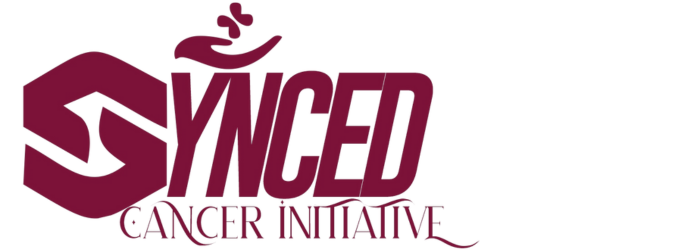For years, scientists have known that being overweight or obese can raise the risk of developing breast cancer and even increase the chances of dying from it. But the big question has always been: why?
A new study may finally offer some answers. Researchers discovered that certain breast cancer tumors, especially the aggressive type known as triple-negative breast cancer, may actually “feed” on the fat stored in nearby fat cells. The findings, published in Nature Communications, not only help explain the connection between obesity and breast cancer but also open up possibilities for new treatments that could one day stop deadly tumors in their tracks.
What is triple-negative breast cancer?
Triple-negative breast cancer makes up about 15% of all breast cancer cases. Unlike other breast cancers, it does not respond to hormone therapies because the tumor cells lack three important receptors (estrogen, progesterone, and HER2). This makes it particularly difficult to treat.
It also tends to occur more often in Black women and women under 40, and it has a higher chance of coming back after treatment compared to other breast cancers. Survival rates are usually lower because there are fewer effective treatment options.
This is why scientists are interested in discovering what fuels these tumors and how to cut off their energy supply.
Tumors with "straws"
The new research suggests that triple-negative breast cancer cells have a sneaky way of stealing energy. They form tiny, straw-like structures, called gap junctions, that poke into nearby fat cells. Through these “straws,” the tumor cells suck out lipids, fatty molecules that the body typically uses for storing energy.
Dr. Jeremy Williams, the study’s lead author and a postdoctoral researcher at the University of California, San Francisco, explained it this way:
“Aggressive cancer cells can co-opt different nutrient sources to help them grow, including by stimulating fat cells in the breast to release their lipids. In the future, new treatments might starve the tumor cells by preventing their access to lipids from neighboring cells.”
In other words, these tumors are not just living off the patient’s blood supply. They are directly tapping into nearby fat cells for extra fuel.
The study combined experiments using human breast cancer tissue samples and mouse models.
- In human tissue experiments:
- The researchers looked at fat cells at different distances from the tumor cells.
- They found that the fat cells closest to the tumor were severely depleted of lipids, while those farther away had more stored fat. This showed that the tumor was literally draining the fat cells.
- In mouse experiments:
- Researchers genetically tweaked breast cancer cells so they could no longer form the straw-like gap junctions.
- The tumors stopped growing when these modified tumor cells were implanted into mice.
- In fact, just knocking out one gene was enough to block tumor progression.
This was strong evidence that the gap junction “straws” are crucial for cancer cells’ survival.
Recommendation
This discovery matters for two big reasons:
- New treatment strategies: If scientists can block the ability of tumor cells to tunnel into fat cells, they might be able to stop aggressive cancers like triple-negative breast cancer from spreading. Importantly, there are already some experimental drugs in development that target gap junctions, though not specifically for breast cancer.
- Lifestyle impact: Since obesity means more fat cells are present in the body, and these fat cells can serve as fuel for tumors, achieving and maintaining a healthy weight could help reduce cancer risk. As Dr. Julia McGuinness, a breast cancer specialist at Columbia University, put it:
“Slimming down could be protective. We already know that obese women who have these kinds of cancer have worse outcomes.”
Cancer researchers not involved in the study are cautiously optimistic.
- Dr. McGuinness called the study “the first evidence of a mechanism showing the association between fat and cancer.” She believes it offers a possible pathway to treat aggressive cancers that currently lack good therapies.
- Dr. Justin Balko, a cancer research professor at Vanderbilt University Medical Center, agreed the study sheds light on “a new way cancer grows and feeds itself.” However, he cautioned that it’s too soon to know whether this fat-sucking mechanism is a significant factor in human breast cancer growth. More research in actual patients will be needed.
What this means for patients now
While these findings won’t immediately change how doctors treat breast cancer, they are an essential step forward. They give researchers a clearer picture of how tumors interact with fat cells and provide a new target for drug development.
In the meantime, doctors emphasize that maintaining a healthy weight is still one of the most important steps women can take to reduce breast cancer risk. Obesity has long been linked to worse outcomes in breast cancer, and this study helps explain why.
Conclusion
The idea that breast cancer cells may literally use “straws” to drink up fat from neighboring cells is both startling and eye-opening. It shows just how resourceful aggressive cancers can be in finding ways to grow.
But the good news is that by understanding this process, scientists are one step closer to developing treatments that could starve tumors of their fuel. For women facing the frightening reality of triple-negative breast cancer, that’s a glimmer of hope.
As research continues, lifestyle strategies (like weight management) and medical advances could work together to tip the balance against this deadly disease.
References
NBC News – health/cancer/fat-cells-breast-cancer-tumors-triple-negative-risk-overweight
Accessed 1st September, 2025











What do you think?
It is nice to know your opinion. Leave a comment.